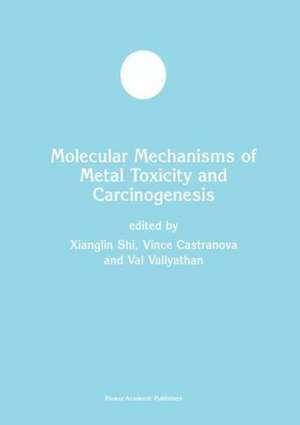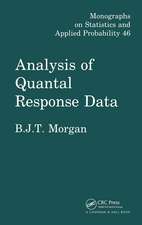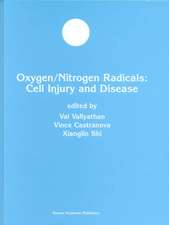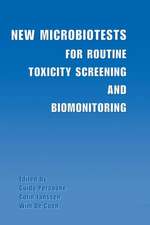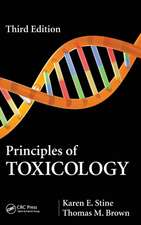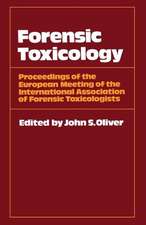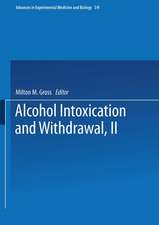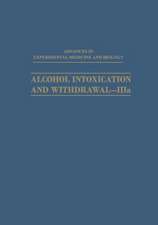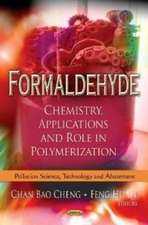Molecular Mechanisms of Metal Toxicity and Carcinogenesis: Developments in Molecular and Cellular Biochemistry, cartea 34
Autor Xianglin Shi, Vince Castranova, Val Vallyathan, William G. Perryen Limba Engleză Paperback – 15 dec 2012
| Toate formatele și edițiile | Preț | Express |
|---|---|---|
| Paperback (1) | 951.29 lei 43-57 zile | |
| Springer Us – 15 dec 2012 | 951.29 lei 43-57 zile | |
| Hardback (1) | 811.77 lei 38-44 zile | |
| Springer Us – 31 dec 2001 | 811.77 lei 38-44 zile |
Din seria Developments in Molecular and Cellular Biochemistry
- 5%
 Preț: 389.20 lei
Preț: 389.20 lei - 24%
 Preț: 1057.00 lei
Preț: 1057.00 lei - 18%
 Preț: 1223.70 lei
Preț: 1223.70 lei - 24%
 Preț: 1060.06 lei
Preț: 1060.06 lei -
 Preț: 404.29 lei
Preț: 404.29 lei - 5%
 Preț: 371.30 lei
Preț: 371.30 lei - 18%
 Preț: 1822.40 lei
Preț: 1822.40 lei - 5%
 Preț: 734.57 lei
Preț: 734.57 lei - 24%
 Preț: 1568.15 lei
Preț: 1568.15 lei - 24%
 Preț: 1580.12 lei
Preț: 1580.12 lei - 24%
 Preț: 1584.06 lei
Preț: 1584.06 lei - 5%
 Preț: 365.61 lei
Preț: 365.61 lei - 24%
 Preț: 1564.10 lei
Preț: 1564.10 lei - 24%
 Preț: 1077.73 lei
Preț: 1077.73 lei - 15%
 Preț: 582.59 lei
Preț: 582.59 lei - 24%
 Preț: 1583.84 lei
Preț: 1583.84 lei - 5%
 Preț: 671.23 lei
Preț: 671.23 lei - 18%
 Preț: 1222.62 lei
Preț: 1222.62 lei - 24%
 Preț: 801.40 lei
Preț: 801.40 lei - 24%
 Preț: 1098.59 lei
Preț: 1098.59 lei - 18%
 Preț: 940.09 lei
Preț: 940.09 lei - 24%
 Preț: 1060.12 lei
Preț: 1060.12 lei - 5%
 Preț: 1003.87 lei
Preț: 1003.87 lei - 18%
 Preț: 935.67 lei
Preț: 935.67 lei - 5%
 Preț: 1418.48 lei
Preț: 1418.48 lei - 24%
 Preț: 795.21 lei
Preț: 795.21 lei - 18%
 Preț: 1214.07 lei
Preț: 1214.07 lei - 15%
 Preț: 643.00 lei
Preț: 643.00 lei - 24%
 Preț: 808.12 lei
Preț: 808.12 lei
Preț: 951.29 lei
Preț vechi: 1160.10 lei
-18% Nou
Puncte Express: 1427
Preț estimativ în valută:
182.09€ • 197.85$ • 153.05£
182.09€ • 197.85$ • 153.05£
Carte tipărită la comandă
Livrare economică 21 aprilie-05 mai
Preluare comenzi: 021 569.72.76
Specificații
ISBN-13: 9781461352426
ISBN-10: 1461352428
Pagini: 252
Ilustrații: VII, 242 p.
Dimensiuni: 210 x 297 x 13 mm
Greutate: 0.61 kg
Ediția:2001
Editura: Springer Us
Colecția Springer
Seria Developments in Molecular and Cellular Biochemistry
Locul publicării:New York, NY, United States
ISBN-10: 1461352428
Pagini: 252
Ilustrații: VII, 242 p.
Dimensiuni: 210 x 297 x 13 mm
Greutate: 0.61 kg
Ediția:2001
Editura: Springer Us
Colecția Springer
Seria Developments in Molecular and Cellular Biochemistry
Locul publicării:New York, NY, United States
Public țintă
ResearchCuprins
Molecular mechanisms of metal toxicity and carcinogenesis.- Cadmium-induced apoptosis and phenotypic changes in mouse thymocytes.- Cytotoxicity and transcriptional activation of stress genes in human liver carcinoma cells (HepG2) exposed to cadmium chloride.- Arsenic-induced NFiB transactivation through Erks-and JNKs-dependent pathways in mouse epidermal JB6 cells.- Lead-related effects on rat fibroblasts.- In vivoreduction of chromium (VI) and its related free radical generation.- Atrazine potentiation of arsenic trioxide-induced cytotoxicity and gene expression in human liver carcinoma cells (HcpG2).- CombiningDmsophila melanogastersomatic-mutation-recombination and electron-spin-resonance-spectroscopy data to interpret epidemiologic observations on chromium carcinogenicity.- Carcinogenic potential and genomic instability of beryllium sulphate in BALB/c-3T3 cells.- Cr (VI) induces cell growth arrest through hydrogen peroxide-mediated reactions.- Comparison of roles of three mitogen-activated protein kinases induced by chromium(VI) and cadmium in non-small-cell lung carcinoma cells.- Differential zinc and DNA binding by partial peptides of human protamine HP2.- Reduction of Cr (VI) by cysteine: Significance in human lymphocytes and formation of DNA damage in reactions with variable reduction rates.- Transactivation of RARE and GRE in the cellular response to arsenic.- Orthopaedic implant related metal toxicity in terms of human lymphocyte reactivity to metal-protein complexes produced from cobalt-base and titanium-base implant alloy degradation.- Arsenic contamination of groundwater and prevalence of arsenical dermatosis in the Hetao plain area, Inner Mongolia, China.- Involvement of Erks activation in cadmium-induced AP-1 transactivationin vitroandin vivo.- Chromium (VI)-induced oxidative stress, apoptotic cell death and modulation of p53 tumor suppressor gene.- Review.- Carcinogenic metals and NF-?B activation.- Effects of glutathione on chromium-induced DNA crosslinking and DNA polymerase arrest.- Minireview.- Cell apoptosis induced by carcinogenic metals.- Gene expression profile in response to chromium-induced cell stress in A549 cells.- Cr (VI) increases tyrosine phosphorylation through reactive oxygen species-mediated reactions.- Molecular biology of nickel carcinogenesis.- Model reactions of Cr (VI) with DNA mediated by thiol species.- On the mechanism of Cr (VI)-induced carcinogenesis: Dose dependence of uptake and cellular responses.- Index to Volume 222.- Instructions to Authors.
